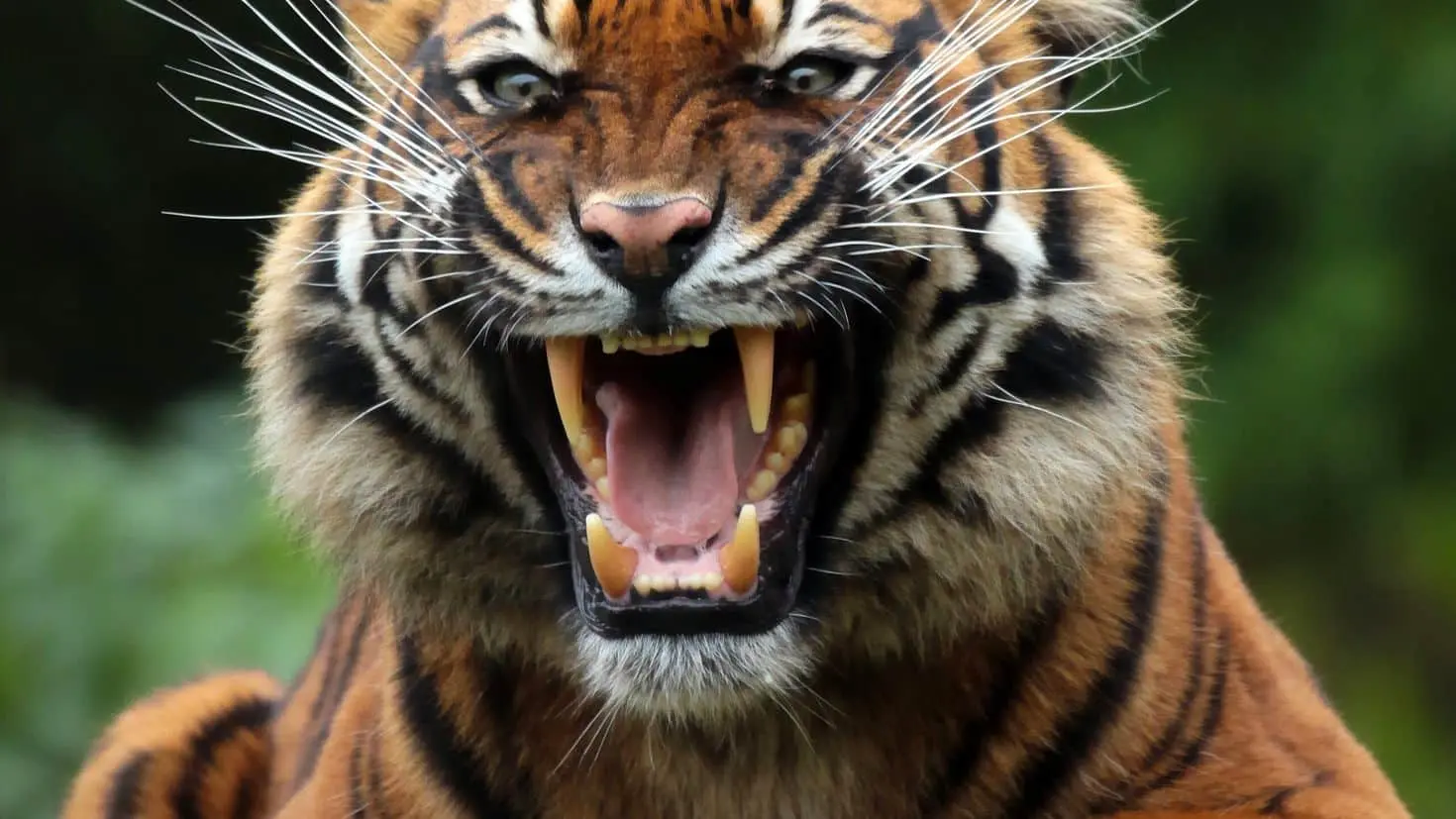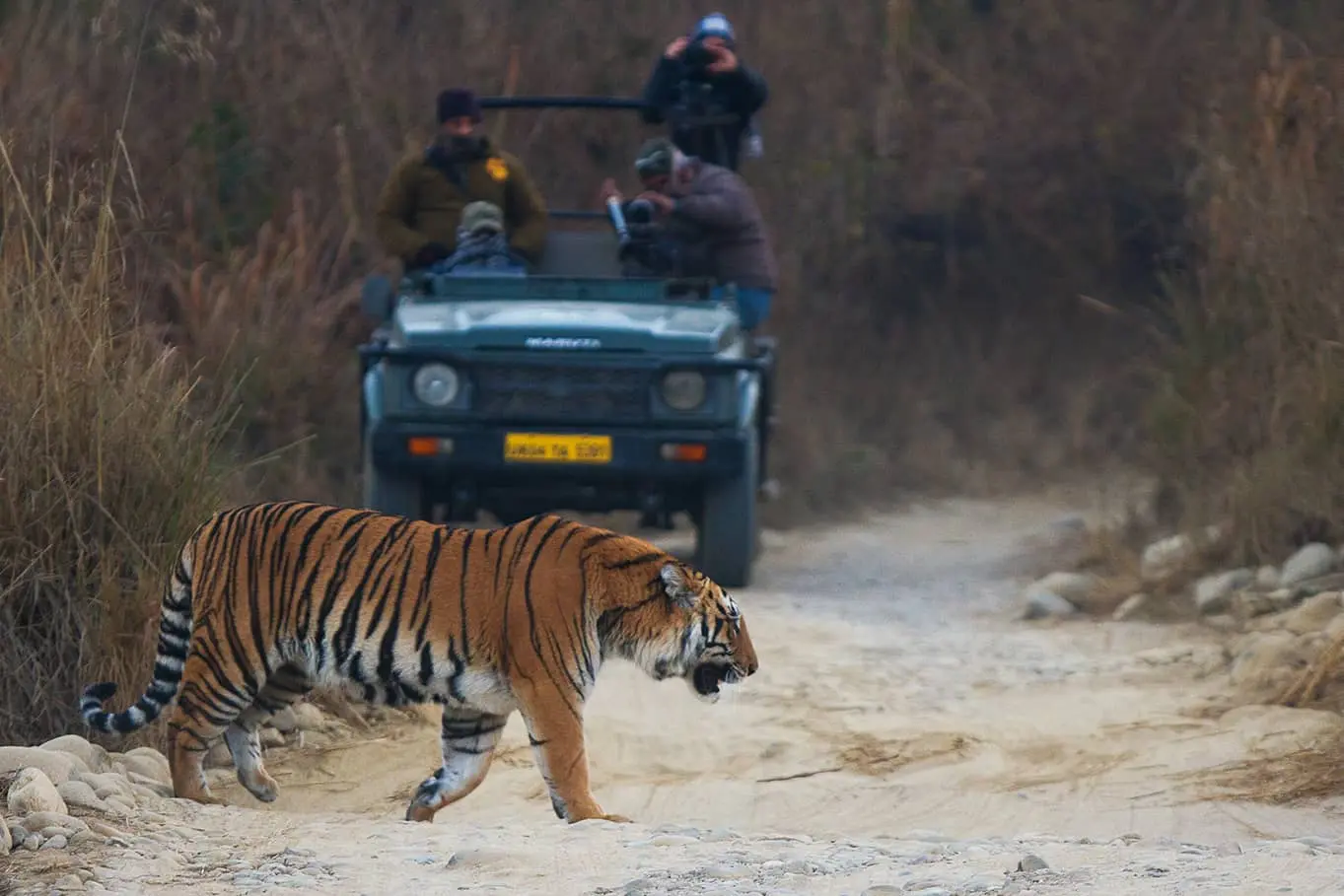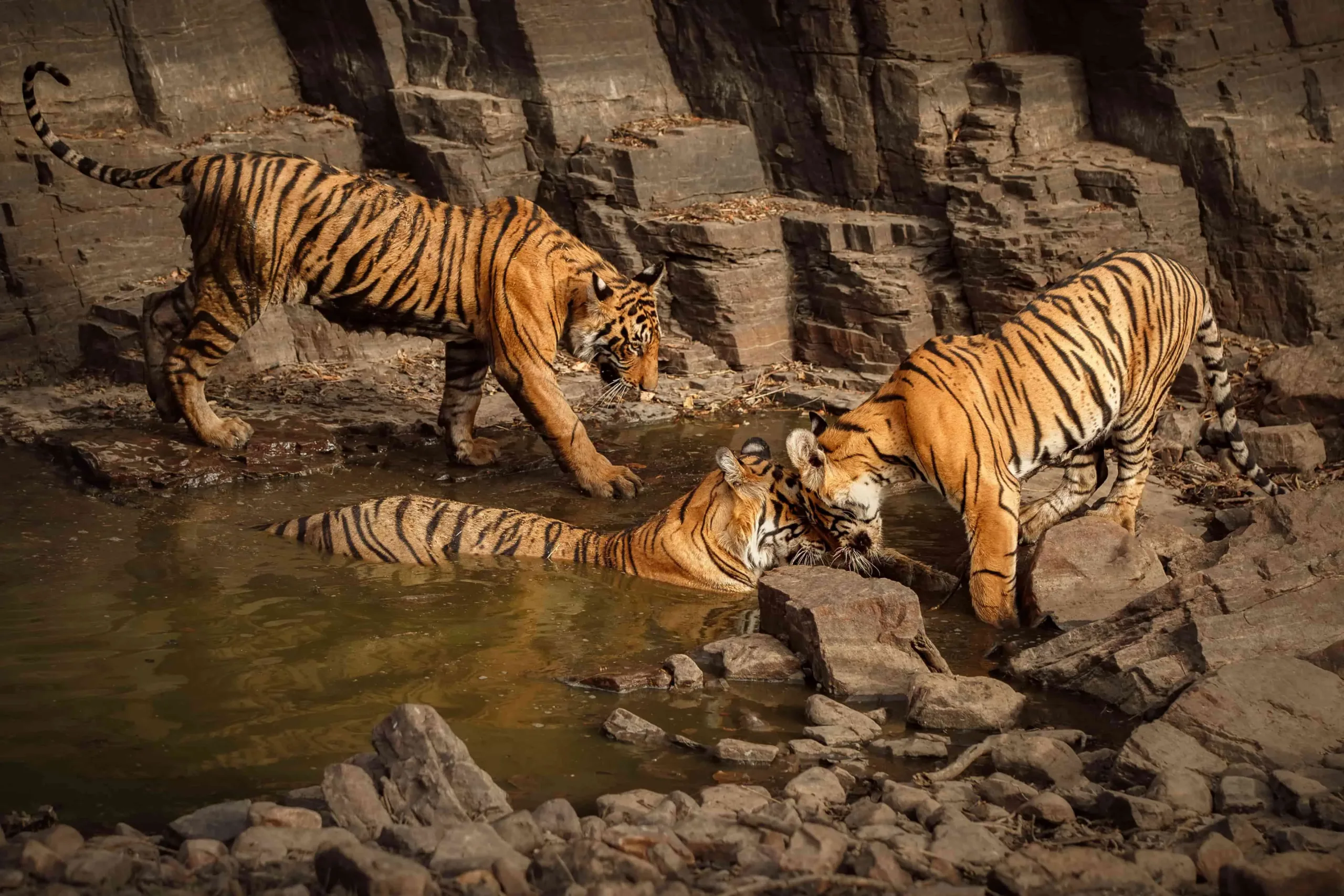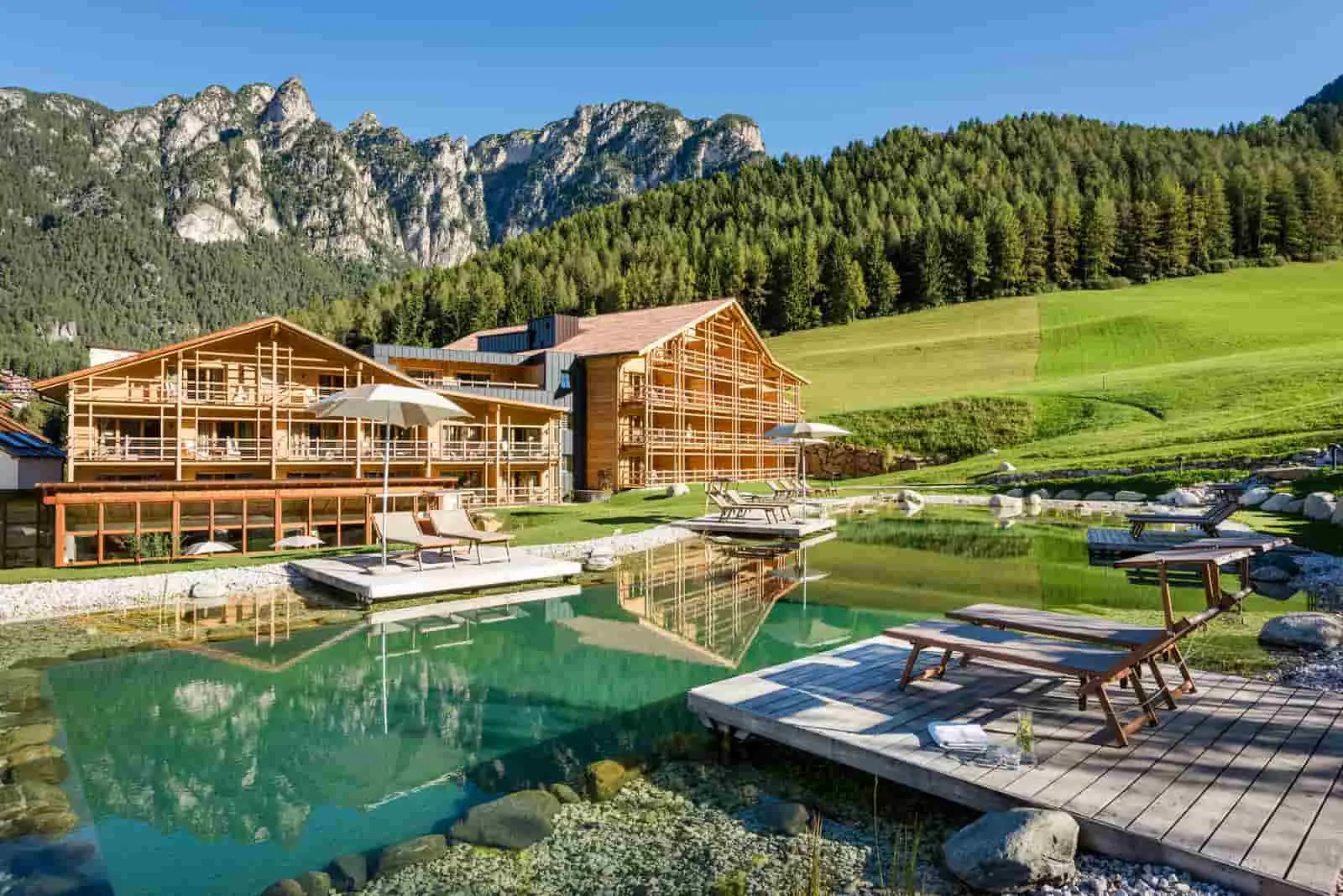Discover the Wild Symphony: Embrace Nature's Melody at Jim Corbett Park!
Unleash Your Adventurous Spirit: Embark on the Thrilling Journey of a Lifetime at Jim Corbett Safari
Approve
By UK Tourism
Luxury
Hotels
10+
Attractions
Reserve your slots now
Your Dream Getaway, Just a Click Away Book Now!
Booking Form
"*" indicates required fields

Roar with Nature: Jim Corbett Park Awaits
Jim Corbett National Park is located in the state of Uttarakhand, India. The park has several entry gates, and the method of reaching the park can vary depending on your starting point and the gate you intend to enter. Here are the general guidelines for reaching Jim Corbett National Park
To explore the wonders of Jim Corbett National Park, visitors have a range of activities to choose from. Safari drives, both jeep and elephant, offer opportunities to venture deep into the wilderness and witness wildlife in their undisturbed environment. Nature walks, birdwatching excursions, and guided tours allow guests to delve into the park’s intricate ecosystem, while the serene Kosi River invites travelers to unwind and bask in the tranquility of nature.
Activities To Explore in Jim Corbett

Gypsy Safari
Enjoy thrilling jeep safaris through the dense forests and grasslands, offering the chance to spot a wide range of wildlife, including tigers, leopards, elephants, deer, and numerous bird species.

Wild Animal
Experience a unique perspective on wildlife as you embark on an elephant-back safari, guided by skilled mahouts, allowing you to get closer to animals like tigers and other elusive creatures.

Village Walking
Get a glimpse into the local culture and lifestyle by taking guided walks to nearby villages, interacting with the friendly locals.

Corbett Museum
Learn about the park's history and wildlife conservation efforts at the Corbett Museum located at Dhangari Gate.
Important Notice about Jim Corbett
- Visitors are not allowed to trek, cycle or walk inside Corbett Tiger Reserve except at few designated places.
- Visitors are allowed to move only in designated vehicles in Corbett Tiger Reserve with a registered Nature Guide/Naturalist.
- Always keep a safe distance from wild animals.
- All the adult visitors are required following identity cards (Voter ID, Driving License, PAN Card, Govt. Employee Card, Passport and Student ID)
- In case of current Safari Booking in Jim Corbett any of the zone between 1 and 10 to be alloted
- In case your safari is not booked due to reasons like technical error or non-availability of seat, we will refund the Maximum amount in your given bank account. The same would be communicated accordingly.
Jim Corbett Safari Booking Information
Our Jim Corbett Safari booking service offers a range of options to suit your preferences and budget:

Gypsy Safari Booking
2.5 Hour Safari
|
Jeep Safari Price & Safari Zones
|
|
|---|---|
|
Price (Indian)
|
INR 7000 / - Jeep ( Maximum 6 Persons & 3 children (b/w - 5 to 12 years) are allowed in ONE Jeep)
|
|
Price (Foreigner)
|
INR 13000 / Jeep ( Maximum 6 Persons & 3 children (b/w - 5 to 12 years) are allowed in ONE Jeep )
|
|
Zones
|
Bijrani / Garjiya / Jhirna / Dhela / Durgadevi / Phato / Sitabani
|
|
Inclusions
|
Permission of CTR, Jeep, Driver, Permit and All Entries & Taxes. * Guide Fee to be paid by the guest on the spot directly. * Pick & drop is not included from hotels.
|

Canter Safari Booking
2.5 Hour Safari
|
Canter Safari Price & Zone
|
|
|---|---|
|
Price (Indian)
|
INR 2000 / Person ( ONE Canter has 16 Seats )
|
|
Price (Foreigner)
|
INR 4000 / Person ( ONE Canter has 16 Seats )
|
|
Zones
|
Peaceful Dhikala
|
|
Inclusions
|
Permission of CTR, Jeep, Driver, Permit and All Entries & Taxes. * Guide Fee to be paid by the guest on the spot directly. * Pick & drop is not included from hotels.
|
Jim Corbett Safari Timing
One can visit Jim Corbett National Park for day safari round the year, depending upon his convenience and purpose of visit. Jeep Safari entry time changes as per month and season. Jim Corbett National Park Jeep Safari timing for Summer months is 5:00-5:30AM & 2:30- 3:00 NOON for moring & evening slot respectively viz May, June, July, August & September and safari duration during summer month is 3:00 Hours and Jim Corbett National Park Jeep Safari timing for Winter months is 6:00-6:30AM & 1:30- 2:00 NOON is October, November, December, January, February, March & April.
|
Months
|
Safari Timings:
|
|---|---|
|
From 1st Oct to 31st Oct:
|
06:30 am - 10:00 am & 02:30 pm - 06:00 pm
|
|
From 1st Nov to 31st Jan:
|
07:00 am - 10:30 am & 02:00 pm - 05:30 pm
|
|
From 1st Feb to 31st Mar:
|
06:30 am - 10:00 am & 02:30 pm - 06:00 pm
|
|
From 1st April to 15th May:
|
06:00 am - 09:30 am & 03:00 pm - 06:30 pm
|
|
From 16th May to 30th June:
|
06:00 am - 09:30 am & 03:30 pm - 07:00 pm
|
How to Book Jim Corbett National park Safari Online
Follow these step to Book Safari Online
To book a safari in Jim Corbett National Park online, you can follow these steps:
Choose the Official Website: Start by visiting the official website of Jim Corbett National Park. This is the most reliable source for booking safaris and getting accurate information.
Tour operators: You can also Book Jim Corbett national park safari through a tour Company or Agent. There are many tour companies and agents who offer safari packages which include tickets, transport, and Hotels. You can search online for tour operators like us who is offering safari packages for Jim Corbett National Park Safari Booking.
Offline safari booking in Jim Corbett: You can also book a safari ticket offline at the park. However, it is a risky Decision , especially during peak season, as safari tickets tend to sell out quickly.
Always plan your visit well in advance, especially during peak tourist seasons, to secure your preferred safari slot and ensure a memorable experience at the Jim Corbett National Park.
Important Note
- Information of each visitor :- Full name, Age, Sex (as per the ID proof provided by you)
- Date of Booking safari and timing of Safari (Morning/Afternoon)
- Specific any one ID proof number of all visitors (Voter Id, Aadhar Card, Pan card, Driving license, etc.)
- Pay Payment of Safari Entry fees in advance
Jim Corbett Safari Price
Entry Fee:
For Indian Nationals: The entry fee varies from zone to zone, ranging from around ₹700, per person. For Foreign Nationals: The entry fee is higher for foreign nationals, typically ranging from around ₹1,000 to ₹1,500 per person.Safari Fee:
The safari fee varies based on the type of safari (jeep safari, canter safari, elephant safari) and the zone you select. Jeep Safari: The cost per jeep for Indian nationals can range from around ₹4,000 to ₹5,000, while for foreign nationals, it can range from ₹7,000 to ₹8,000 or more.Canter Safari: The cost per person is generally lower than a jeep safari, ranging from around ₹1,500 to ₹2,000 for Indian nationals and higher for foreign nationals.Elephant Safari: The cost per person varies and is typically lower than jeep or canter safaris.
Jim Corbett Safari Booking
If you’re looking for information about visiting Jim Corbett National Park, booking safaris, or exploring the wildlife and natural beauty it offers, feel free to ask any specific questions you have!
The best time to visit Jim Corbett National Park depends on your interests and the type of experience you’re seeking. The park is open to visitors from mid-November to mid-June. Here’s a breakdown of the different seasons and what they offer:
Winter (November to February):
- This is considered the best time for wildlife enthusiasts and birdwatchers.
- The weather is cool and pleasant, making it comfortable for safaris and outdoor activities.
- Animals are often spotted near water sources, making wildlife viewing easier.
- It’s also the migratory bird season, so birdwatching is particularly rewarding.
Spring (March to April):
- The weather starts to warm up, and the park is still a great place to visit.
- The vegetation starts to dry out, making wildlife spotting easier.
- Tiger sightings might be slightly less frequent compared to winter, but overall animal sightings are still good.
Summer (May to June):
- This is the peak tourist season due to school vacations.
- The weather can be hot and dry, but early morning and late afternoon safaris are more bearable.
- Animals gather around waterholes, increasing the chances of sightings.
- While tiger sightings might be more common due to the open landscape, the heat can limit overall wildlife activity.
It’s important to note that the park is closed during the monsoon season, from mid-June to mid-November, due to heavy rainfall. During this time, the park remains closed to visitors for safety reasons, as the trails and roads can become inaccessible.
To have the best experience, plan your visit based on your preferences and the type of wildlife you want to see. For tiger sightings and comfortable weather, the winter and spring months are generally recommended. Remember to book your accommodations and safaris well in advance, especially during peak tourist seasons, to ensure availability.
Tips for Best Safari Experience
To make a successful safari, keep these tips in mind:
Book in Advance: Safaris in popular national parks like Jim Corbett can get fully booked quickly, especially during peak seasons. To secure your preferred date and time, make your reservations well in advance, ideally a few months before your planned visit.
Choose the Right Zone: The park is divided into multiple zones, each offering different landscapes and wildlife experiences. Do some research to understand which zone aligns with your interests. Dhikala, Bijrani, Jhirna, and Dhela are some of the popular zones.
Accommodation Package: Some zones offer accommodations within the park, allowing you to have a more immersive experience. Look into packages that include both accommodations and safari bookings.
ID Proof: You might be required to present a government-issued ID proof that matches the information you provided during booking. Carry these IDs with you during the safari.
Jim Corbett National Park, named after the renowned British hunter and conservationist Jim Corbett, has a rich history that spans back to its establishment as one of India’s earliest national parks. Here’s an overview of its history:
Early Years and Hunting Era:
- The area that is now Jim Corbett National Park was initially used for hunting by the British during the colonial era. Jim Corbett himself was a skilled hunter, known for his encounters with man-eating tigers and leopards that posed a threat to local communities.
- Over time, Corbett developed a deep respect for wildlife and became an advocate for conservation. He played a significant role in raising awareness about the need to protect India’s endangered species.
Establishment of the Park:
- In 1936, the area was declared as Hailey National Park, named after Sir Malcolm Hailey, the then-Governor of the United Provinces in India.
- This park was established primarily to protect the Bengal tiger, which was on the brink of extinction due to rampant hunting and habitat destruction.
Renaming and Expansion:
- In 1955, the park was renamed Ramganga National Park after the Ramganga River that flows through it.
- In 1956, it was again renamed Jim Corbett National Park in honor of the man who had worked tirelessly for the conservation of wildlife and the establishment of the park.
- The park’s boundaries were expanded over the years to include additional areas and habitats.
Conservation Efforts:
- Jim Corbett’s efforts to save the Bengal tiger and other wildlife were influential in the creation of the park and in shifting the focus from hunting to conservation.
- He authored several books, including “Man-Eaters of Kumaon” and “The Man-Eating Leopard of Rudraprayag,” which documented his experiences dealing with dangerous animals and advocated for their protection.
Wildlife Conservation Success:
- Thanks to the efforts of Jim Corbett and subsequent conservationists, the park became a safe haven for various species, especially the Bengal tiger.
- Today, the park is recognized not only for its tiger population but also for its diverse flora and fauna.
Tourism and Ecotourism:
- Over the years, the park’s focus shifted from being a hunting ground to becoming a protected area for wildlife conservation and ecotourism.
- Safari activities were introduced, allowing visitors to experience the beauty of the park’s landscapes and observe its wildlife while adhering to strict guidelines to minimize disturbance to animals.
Jim Corbett National Park’s history is intertwined with the evolution of wildlife conservation in India. It serves as a testament to the efforts of individuals like Jim Corbett and the importance of preserving natural habitats and protecting endangered species.
Winter (November to February):
- This is considered the best time for wildlife enthusiasts and birdwatchers.
- The weather is cool and pleasant, making it comfortable for safaris and outdoor activities.
- Animals are often spotted near water sources, making wildlife viewing easier.
- It’s also the migratory bird season, so birdwatching is particularly rewarding.
Spring (March to April):
- The weather starts to warm up, and the park is still a great place to visit.
- The vegetation starts to dry out, making wildlife spotting easier.
- Tiger sightings might be slightly less frequent compared to winter, but overall animal sightings are still good.
Summer (May to June):
- This is the peak tourist season due to school vacations.
- The weather can be hot and dry, but early morning and late afternoon safaris are more bearable.
- Animals gather around waterholes, increasing the chances of sightings.
- While tiger sightings might be more common due to the open landscape, the heat can limit overall wildlife activity.
The best time to visit and safari booking for Ranthambore National Park is from November to March. The temperature can drop as low as two degrees Celsius. For this reason, it is important to dress in layers. This way, you can change your clothes easily according to your activity and weather conditions. If you want to see more tigers, you can go in the evening or early morning. During the monsoon season, the park remains closed.
Getting to Ranthambore National Park is convenient via different modes of transportation:
By Air: The nearest airport to Ranthambore National Park is Sanganer Airport in Jaipur, located 180 km away. Travelers can easily cover this distance by taxi or buses. Regular flights operate between major cities like Delhi, Mumbai, Kolkata, and Ahmedabad, with direct flights to Jaipur from all major cities.
By Rail: Reaching Ranthambore National Park by train is comfortable, with the nearest railway station being Sawai Madhopur Railway, just 11 km from the park. Tourists can book cabs, taxis, or buses online to reach the destination. Trains operate daily between Jaipur Railway Station and major cities like Delhi, Mumbai, Ahmedabad, and Kolkata, making the journey hassle-free.
By Road: Ranthambore National Park is well-connected by road to major cities like Delhi, Ahmedabad, Mumbai, and Kolkata. The road distance from Delhi is approximately 417 km, from Ahmedabad is 657 km, from Mumbai is 1102 km, and from Kolkata is 1572 km. Private state bus services, as well as private cars, traveler buses, taxis, and cabs, are available for a smooth journey to the park. The easy connectivity of roads makes the route simple and easily accessible.
Road distances between Ranthambore and other cities:
– Delhi to Ranthambore: Approx. 381 km (Approx. 6 hours journey via NH8 and NH 11A)
– Jaipur to Ranthambore: Approx. 180 km (Approx. 3 hours journey via Rajasthan State Hwy 24)
– Agra to Ranthambore: Approx. 239 km (Approx. 4 hours journey via RJ SH 1)
– Bharatpur to Ranthambore: Approx. 202 km (Approx. 3 hours 37 min journey via RJ SH 1)
– Udaipur to Ranthambore: Approx. 388 km (Approx. 6 hours 10 min journey via NH 76 and RJ SH 29)
– Ahmedabad to Ranthambore: Approx. 640 km (Approx. 9 hours 47 min journey via NH8 and NH 76)
– Mumbai to Ranthambore: Approx. 1031 km (Approx. 16 hours 51 min journey via NH 3)
Ranthambore is a significant historical site located in the state of Rajasthan, India. The history of Ranthambore can be traced back to ancient times and is intertwined with various dynasties and rulers. Here is a brief overview of its historical significance:
Ancient Period: Ranthambore’s history dates back to the 6th century AD when it was a part of the region known as the Rajputana. The area around Ranthambore was home to various Rajput clans, who were known for their valor and military prowess.
Chauhan Dynasty: Ranthambore’s prominence grew during the 10th century when it became the stronghold of the Chauhan dynasty. The Chauhans ruled the region with Ranthambore Fort as their primary fortress. The fort’s strategic location atop a hill provided a vantage point to control trade routes and defend against invasions.
Delhi Sultanate: In the 13th century, Ranthambore faced numerous invasions from the Delhi Sultanate. The Chauhan ruler, Hammir Dev Chauhan, put up a fierce resistance, but ultimately, Ranthambore fell to the forces of Alauddin Khilji in 1301 AD.
Mughal Period: Ranthambore came under Mughal rule during the reign of Akbar in the 16th century. The Mughals utilized the fort to control the region, and it remained an important military outpost.
Maratha and British Rule: In the 18th century, Ranthambore passed into the hands of the Marathas and later the British East India Company. The British continued to use the fort for administrative and military purposes.
Post-Independence: After India gained independence in 1947, Ranthambore, along with the rest of Rajasthan, became a part of the newly formed Indian state. The area around Ranthambore was declared a wildlife sanctuary in 1955 and later designated as a national park in 1980, aiming to preserve the rich wildlife, especially the endangered Bengal tiger population.
Today, Ranthambore National Park is one of the most popular tiger reserves and wildlife sanctuaries in India, attracting tourists and wildlife enthusiasts from around the world. Its historical significance, coupled with its diverse flora and fauna, makes it a unique and captivating destination. The park remains a testament to the region’s ancient past and serves as a reminder of the importance of preserving natural habitats for future generations.
FAQs
Jim Corbett National Park is located in the state of Uttarakhand, India. It covers a vast area and has multiple entry gates. The park’s main entrance is at Ramnagar, which is the closest town to the park. Here are the approximate coordinates for the main entrance of Jim Corbett National Park:
Jim Corbett National Park’s fame rests on its pivotal tiger conservation, historical significance, diverse wildlife, and picturesque landscapes. Named after Jim Corbett, the park’s success in preserving the Bengal tiger, rich biodiversity, and eco-tourism attractions make it a renowned destination for nature enthusiasts, photographers, and adventurers.
Winter (November to February):
- This is considered the best time for wildlife enthusiasts and birdwatchers.
- The weather is cool and pleasant, making it comfortable for safaris and outdoor activities.
- Animals are often spotted near water sources, making wildlife viewing easier.
- It’s also the migratory bird season, so birdwatching is particularly rewarding.
Spring (March to April):
- The weather starts to warm up, and the park is still a great place to visit.
- The vegetation starts to dry out, making wildlife spotting easier.
- Tiger sightings might be slightly less frequent compared to winter, but overall animal sightings are still good.
Summer (May to June):
- This is the peak tourist season due to school vacations.
- The weather can be hot and dry, but early morning and late afternoon safaris are more bearable.
- Animals gather around waterholes, increasing the chances of sightings.
- While tiger sightings might be more common due to the open landscape, the heat can limit overall wildlife activity.
INR 5000 / – Jeep ( Maximum 6 Persons & 2 children (b/w – 5 to 12 years) are allowed in ONE Jeep)
Yes, Jim Corbett National Park is definitely worth visiting for a variety of reasons:
Wildlife Diversity: The park is home to a rich variety of wildlife, including the iconic Bengal tiger, elephants, leopards, various deer species, reptiles, and hundreds of bird species. The chance to witness these animals in their natural habitat is a unique and awe-inspiring experience.
Tiger Conservation: Jim Corbett National Park has played a crucial role in the conservation of the Bengal tiger. It offers one of the best opportunities to spot tigers in the wild, contributing to the efforts to protect this endangered species.
Scenic Beauty: The park’s landscapes are stunning, ranging from dense forests to grassy meadows and riverine ecosystems. The Ramganga River flows through the park, adding to its scenic charm.
Birdwatching Paradise: With over 600 bird species, the park is a paradise for birdwatchers. During the migratory season, the diversity of birdlife is particularly impressive.
Adventure and Eco-Tourism: The park offers various safari options, allowing you to explore the wilderness and observe wildlife responsibly. The focus on eco-tourism ensures minimal impact on the environment.
Historical Significance: Named after Jim Corbett, a pioneer in wildlife conservation, the park has a rich historical background that adds to its allure.
Proximity to Major Cities: Its accessibility from cities like Delhi and Nainital makes it a convenient destination for both domestic and international travelers.
Photography Opportunities: The park’s natural beauty and diverse wildlife offer fantastic opportunities for photography enthusiasts.
However, it’s important to note that wildlife sightings are not guaranteed due to the animals’ natural behavior and the park’s vast size. Patience and proper planning are key. Also, make sure to respect park regulations to ensure the well-being of the animals and the environment. Overall, if you’re interested in nature, wildlife, and conservation, Jim Corbett National Park provides an unforgettable experience.
Yes, you can definitely stay in Jim Corbett National Park. The park offers a range of accommodation options to suit various budgets and preferences. Staying within or near the park allows you to have a more immersive experience and maximize your time for wildlife exploration. Here are some accommodation options:
Forest Rest Houses: The park has several forest rest houses located within different zones. These are basic accommodations managed by the forest department. They offer a rustic experience and need to be booked in advance.
Resorts and Lodges: There are numerous resorts and lodges located near the park’s entry gates. These establishments offer various levels of comfort and amenities, ranging from budget to luxury options.
Dhikala Canter Safari Package: Dhikala is a popular zone within the park that offers a unique experience where you stay in forest rest houses and explore the area through canter safaris, which are open-air vehicles. This package is managed by the forest department and includes accommodation and meals.
Private Resorts: There are private resorts located in the vicinity of the park that offer comfortable accommodation, dining options, and often have facilities like swimming pools and spa services.
Eco-Friendly Lodges: Some lodges and resorts emphasize eco-friendly practices, aiming to minimize their impact on the environment while providing a comfortable stay.
When planning your stay, consider factors such as the zone you want to explore, your budget, the type of accommodation you prefer, and the amenities you need. It’s advisable to book accommodations well in advance, especially during peak tourist seasons, to ensure availability. Keep in mind that the park’s regulations prioritize sustainable tourism, so choose accommodations that align with responsible and ethical practices.
A safari in Jim Corbett National Park typically lasts for about 3 to 4 hours, similar to many other national parks in India. The duration of the safari can vary based on factors such as the zone you’re visiting, wildlife sightings, and the specific safari type. Here’s a breakdown of the general safari duration:
Morning Safari: The morning safari usually starts before sunrise and lasts for approximately 3 to 4 hours. The exact timing can vary based on the season and sunrise time. Morning safaris are popular because animals are more active during the cooler hours of the day.
Afternoon Safari: The afternoon safari also lasts around 3 to 4 hours, starting in the early afternoon. This safari allows you to witness different animal behaviors as they prepare for the evening.
Full-Day Safari: Some zones in Jim Corbett National Park, like Dhikala, offer full-day safaris. These safaris can last from morning until sunset, providing a more extended and immersive wildlife experience. They might also include meals at designated rest houses within the park.
The safari experience in Jim Corbett National Park is guided, and the safari vehicle is accompanied by an experienced naturalist who shares information about the park’s wildlife, flora, and fauna. The exact duration of your safari might vary based on factors such as wildlife sightings and the specific zone you’re exploring. It’s advisable to check with the park authorities or your safari operator for accurate information regarding safari timings and duration.
Bijrani safari zone, Dhikala Safari Zone and Dhela Safari Zone.
You might need roughly about 2-4 days for Jim Corbett.
Jim Corbett Park always be open except heavy rain fall and government Holidays.
Yes, it’s advisable to book a safari in Jim Corbett National Park in advance to secure your preferred date, time, and safari type.
Let's a close look of Jim Corbett
With Our Jim Corbett Safari Booking Service
We are your gateway to discovering the wonders of Jim Corbett National Park. With a wealth of knowledge and a passion for wildlife, we’re here to make your journey through this iconic destination truly unforgettable.
Blogs
Embrace the Wild: Unveil Nature's Majesty at Jim Corbett National Park!
Design your trip to the Jim Corbett National Park.
Embark on an unforgettable journey to Jim Corbett National Park, where the captivating landscapes and diverse wildlife await your exploration. Immerse yourself in the heart of nature as you venture through lush forests, serene riverbanks, and open grasslands. Witness the regal Bengal tiger, elegant elephants, elusive leopards, and a myriad of bird species in their natural habitat. Choose from a range of safari options, whether it’s an exhilarating jeep ride, an intimate elephant safari, or the unique canter experience. Indulge in the thrill of spotting wildlife while being guided by expert naturalists who unveil the park’s hidden treasures. Your trip to Jim Corbett promises not just an adventure but a deep connection with nature’s wonders and a chance to contribute to its preservation.



